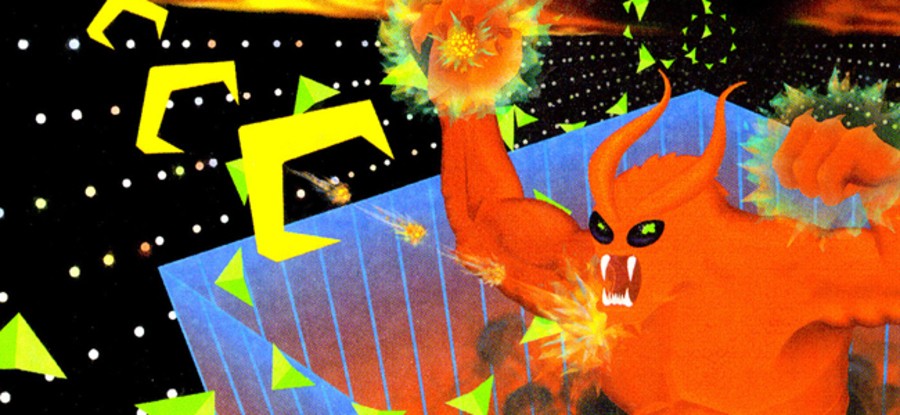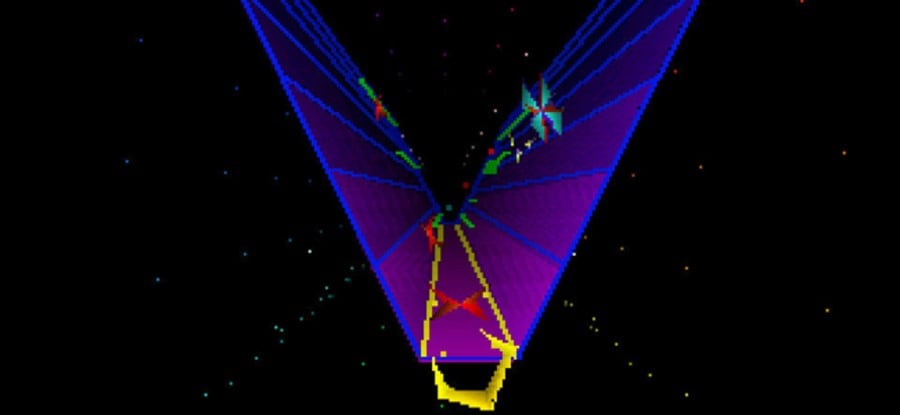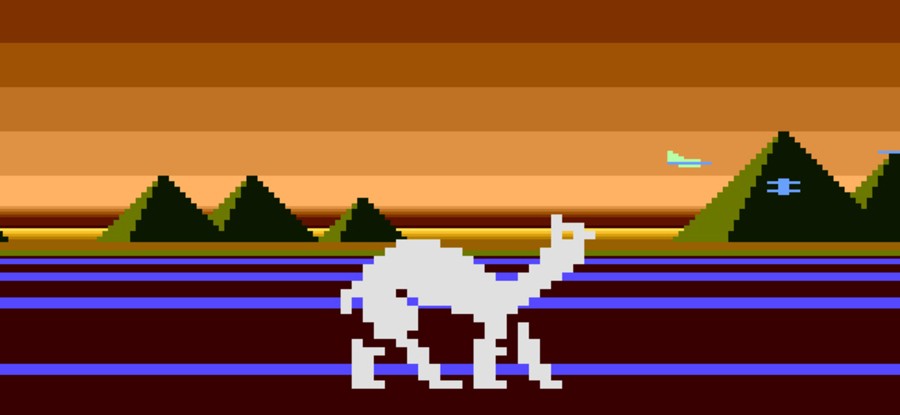
The word ‘legendary’ gets tossed around a little too much these days, but Jeff Minter is a British icon whose portfolio is more than deserving of the clichéd term. Since founding Llamasoft in 1982, the Reading-born developer has worked on a laundry list of noteworthy games, including Gridrunner, Attack of the Mutant Camels, and Tempest 2000. With the latter nearing its 20th anniversary, the luminary recently revealed that he’s working on a spiritual successor to the Atari Jaguar classic for the PlayStation Vita named TxK. We were lucky enough to catch up with sheep-obsessed studio head in order to discuss Sony’s handheld, indie gaming, and the PlayStation 4.

Push Square: To start, can you get us up to speed with what Llamasoft’s been up to lately?
Jeff Minter: We've spent the last couple of years doing iOS games – we’re up to ten so far. We've also ported our game engine to Android, and will release more of the games on that platform as time allows.
 Watch on YouTube
Watch on YouTubeSubscribe to Push Square on YouTube166k
PS: As you’ve just mentioned, you’ve been quite prolific in the smartphone market. Why have you decided to now turn your attention to the Vita with TxK?
JM: A number of reasons really, including the opportunity to work on some really nice hardware that'll really suit what we have in mind. The mobile platforms are fun, but sometimes it's nice to work on a system that has real physical controls, great game-oriented internals, and a fantastic screen. And it'll be nice to be able to have the game released in a market where people don't think that a price higher than 69p is "expensive".
PS: When did you start working on TxK? Can you talk a little bit about the broad aims for the project? What kind of experience can we expect?
JM: We've just started a couple of days ago, and are currently learning our way around the devkits. What I want to do is make a game that is close to the pure essence of Tempest 2000, but obviously with improved graphics and gameplay – it’ll be sharp and fluid and satisfying to modern gamers as well as old hands. You can expect a fast arcade shooter with great music and audio, which will look fantastic on the Vita's vibrant OLED screen. We're not going to overload you with psychedelia like we did in [Xbox 360 title] Space Giraffe – the game will be very pretty, for sure, but we don't want to alienate people by making it too eyeball-searingly overloaded.

PS: You mentioned in your recent blog post that you want to return to the “essence” of Tempest 2000. Why is that, and why haven’t you done it sooner?
JM: Part of the appeal of that game was the straightforwardness of its gameplay. You understood what to do straight away, and the game kept you hooked in with a well graded difficulty curve. Adding too much complexity to that can turn some people off the game, as we found in Space Giraffe, which started from a Tempest 2000-style basis and added extra complexity to the gameplay that was for some too subtle, and at odds with what appeared to be at first sight a straightforward shooter. We want to give people the Tempest 2000 sequel that I think many expected upon seeing Space Giraffe, retaining the pure essence of the original, and only adding to it in ways that don't overload the game and the player.
PS: What mechanics are you aiming to retain from Tempest 2000, and what are you planning to change?
JM: Most of the core Tempest 2000 game mechanics will remain intact, but we'll be adding more enemy types, power-ups, and bonus rounds.

PS: What is it about the Vita that makes it the perfect companion for TxK? Are there any features in particular that made you want to bring the title to the console?
JM: A good variety of control possibilities with the touch screens, accelerometers, and conventional controls. We won't be making use of every little thing just for the sake of it, but we will be using certain [parts] of the Vita's special features in ways that subtly enhance the gameplay and give additional control over certain power-up types. Above all, what I've always loved about the Vita is the big, gorgeous screen – the deep contrast and pure, vibrant colour that is possible on that screen will make a game like TxK look absolutely lovely.
PS: Can you talk a little bit about how you got involved with the system? You mentioned that Sony’s Shahid Ahmad had hooked you up. Did you approach Sony, or was it the other way around?
JM: Gary Liddon from Ruffian mentioned to me that Shahid was on the lookout to bring a lot of indie talent to the Vita, and arranged for us to meet up in London. We had a very positive meeting, and the project was born right then and there. The enthusiasm of Shahid and his team was evident, and it's been a real pleasure working with them; they've been great in getting us set up as quickly and painlessly as possible. I hope that they'll be pleased with what we bring to the Vita as a result.

PS: What do you make of the wider indie push that’s taking place at PlayStation at the moment? Do you think that Sony’s right to be coveting smaller studios?
JM: I think it's a really great move from Sony. It's generated a lot of positive buzz around the company, not just for Vita, but for all of its platforms. It's good for Sony, good for the indie developers, and ultimately good for the players too because it'll bring a lot of interesting new titles to the Sony platforms.
PS: As a developer that’s been involved with game production for a long time, what do you make of the current state of the industry? Where do you think that we’re headed?
JM: It's good to see indie developers being offered a spot on console hardware. There will always be a need for big-budget titles, but it's nice to see smaller teams also getting the chance to play on console hardware, too. It's very encouraging to see Sony leading the way towards making that happen. It'll be good for us smaller developers I think to have a space to operate in that's a bit less chaotic than the smartphone and tablet environment.

PS: What did you make of the recent PS4 announcement? Is there anything that stood out? Is it a platform that you’ve got your eyes on in the future? What challenges do you think that it faces?
JM: It sounds like a very capable and interesting machine, and if there's a chance for us to do some work on it, I'll be keen to do so. Of course, we’ve yet to see what Microsoft is going to come out with, but, from what I've seen so far, Sony has a lot of goodwill due to its recent moves going into this coming generation. Once Microsoft has its cards on the table, we'll have a better idea of how the two consoles stack up against each other. I get the feeling that this time around it's going to be as much about each company’s attitude towards gamers and developers as it is about the hardware, which is likely to be at least broadly equivalent in terms of raw power. Interesting times.
PS: Is there anything that you’re playing at the moment – PlayStation platforms or otherwise – that you think deserves a shout out?
JM: Really, the most of anything that I've been playing lately has been the Pinball Arcade. Often I don't have time to play a long game of anything, so a quick game of pinball hits the spot. I've been enjoying a few other things here and there, too. Melodive on iOS is a very pretty game, soothing and relaxing to play. And I've been enjoying Rock Boshers DX on the Vita; presented in the style of an old Spectrum game, it's quite challenging – even if the graphics are a bit tiny for my ageing eyeballs sometimes!
Thanks so much to Jeff Minter for setting time aside to talk to us. Are you looking forward to TxK? Let us know in the comments section below.

Comments 8
Immense! Great interview and a great bloke. Space Giraffe was a rare jealousy point for me regarding xbox. I'm looking forward to TxK!
@KALofKRYPTON Yeah, it's exciting. I have a feeling this is going to be one to keep a very close eye on. I liked the hint at "subtle" uses of the Vita's various features.
Not being an @ss*ole, but after persona 4 golden and persona 3 FES... I feel my vita only need JRPG's and RPG's... Guacamelee is awesome but i miss the social aspect... Jeez i am addicted to life sims/rpg's
@Sanquine Each to their own pal. I detest JRPGs on the whole
@KALofKRYPTON Still i love my shooter or platformer... But damn it has been an addiction. I dont know what it is:P
@Sanquine The more types of games the better, I reckon. It's good to have all bases covered.
@get2sammyb Yeah thats why i would love to have mickey the power of illusion on vita. Sega..
I love Jeff Minter! You can hear more from him in this video! It's an hour long but he makes it entertaining the whole way through, and he talks about some really interesting stuff! http://www.youtube.com/watch?v=GRHJMf_jY8A
Show Comments
Leave A Comment
Hold on there, you need to login to post a comment...